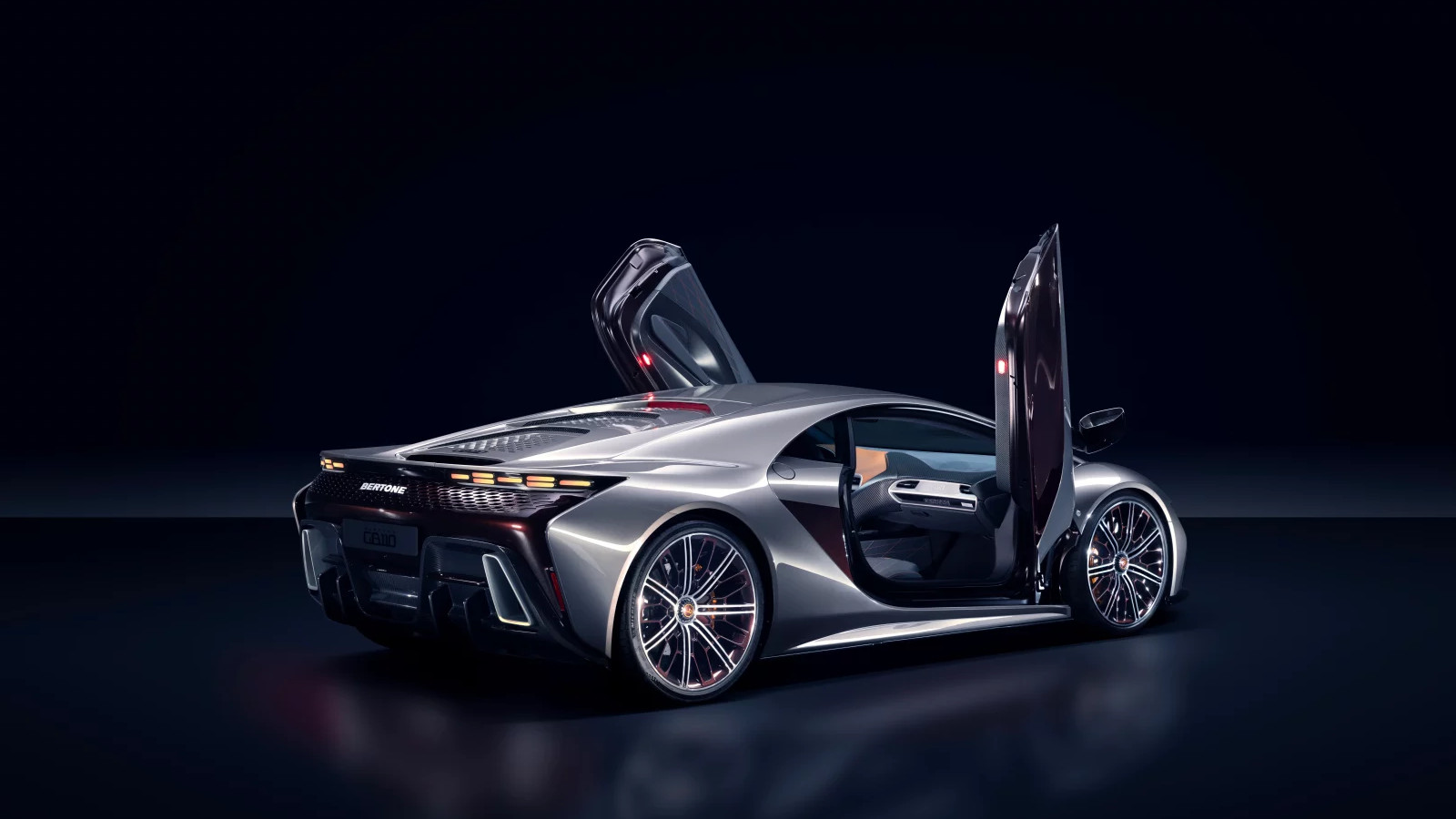New Bertone Runabout splices the spirit of the 1960s roadster with concept-car looks
Bertone kicks off its new Bertone Classics division with a revival of the 1969 Bertone Runabout

Of all the famed Italian carrozzeria, Bertone has had the most highs and lows, shaping everything from everyday hatchbacks and saloons to some of the most striking and influential sports cars and concepts the industry has ever seen. With its own manufacturing facilities near its Turin HQ, the group was frequently commissioned to shape and build niche models for the likes of Fiat and Opel.

The forthcoming Bertone Runabout
Financial woes intensified in the early 20th century, resulting in the company packing up its splendid headquarters – photographed so evocatively by Benedict Redgrove for Wallpaper* back in its heyday – and dispersing its museum-quality collection of concepts and one-offs into the garages of collectors around the world.

The reborn Bertone's first car, the GB110
The Bertone name lives on. Two years ago, the company – under the new ownership of Mauro and Jean-Franck Ricci – released its first Bertone-branded car, the GB110, a classically styled two-seat mid-engined supercar that made a noble connection with some of the company’s greatest hits. This, however, is a new direction.

The original 1969 Autobianchi A112 Runabout concept
The Bertone Runabout was announced this week as the second vehicle in the re-born brand’s stable. Only this time the stakes are slightly different. The Runabout draws on a famed car from the extensive Bertone portfolio. The original model was called the Autobianchi A112 Runabout, styled by Bertone’s chief designer Marcello Gandini and revealed to the world at the 1969 Turin Auto Show.

A sketch showing the evolution from the original Bertone Runabout
Under the spectacular open bodywork was a very humble Autobianchi A112, also styled by Gandini as Italy’s riposte to the British Mini. Gandini used the A112 platform as the underpinnings of a spectacular two-seater, part influenced by racing speedboats. The car went on to influence the later Fiat X1/9 (also by the prolific Gandini), a cult targa-topped mid-engined two-seater that was manufactured from 1972 all the way through to 1989 (the latest seven years by Bertone itself).

Top-down view of the topless Bertone Runabout
Bertone’s designer of choice Andrea Mocellin (who also shaped the GB110) has reinvented the Runabout for the modern age, splicing the spirit of the original Gandini concept with the verve and usability of the little Fiat. ‘We’re taking what’s traditionally remained in museums and car shows and making it available for everyday life as a road-legal vehicle,’ Mocellin has said, describing the Bertone Runabout as ‘carrying forward that same spirit of celebrating the good life’.

Rear view of the new Bertone Runabout
Revealed 55 years after the original, the new Bertone Runabout is planned as a limited-series production car. This also ushers in a new strand to the business, Bertone Classic, which the Riccis describe as ‘honouring the masterpieces from the brand’s illustrious design heritage’, implying that more revival designs are on the way. Runabout production should start by 2026, with a price estimated at around €350,000.
Wallpaper* Newsletter
Receive our daily digest of inspiration, escapism and design stories from around the world direct to your inbox.
Jonathan Bell has written for Wallpaper* magazine since 1999, covering everything from architecture and transport design to books, tech and graphic design. He is now the magazine’s Transport and Technology Editor. Jonathan has written and edited 15 books, including Concept Car Design, 21st Century House, and The New Modern House. He is also the host of Wallpaper’s first podcast.
-
 All-In is the Paris-based label making full-force fashion for main character dressing
All-In is the Paris-based label making full-force fashion for main character dressingPart of our monthly Uprising series, Wallpaper* meets Benjamin Barron and Bror August Vestbø of All-In, the LVMH Prize-nominated label which bases its collections on a riotous cast of characters – real and imagined
By Orla Brennan
-
 Maserati joins forces with Giorgetti for a turbo-charged relationship
Maserati joins forces with Giorgetti for a turbo-charged relationshipAnnouncing their marriage during Milan Design Week, the brands unveiled a collection, a car and a long term commitment
By Hugo Macdonald
-
 Through an innovative new training program, Poltrona Frau aims to safeguard Italian craft
Through an innovative new training program, Poltrona Frau aims to safeguard Italian craftThe heritage furniture manufacturer is training a new generation of leather artisans
By Cristina Kiran Piotti